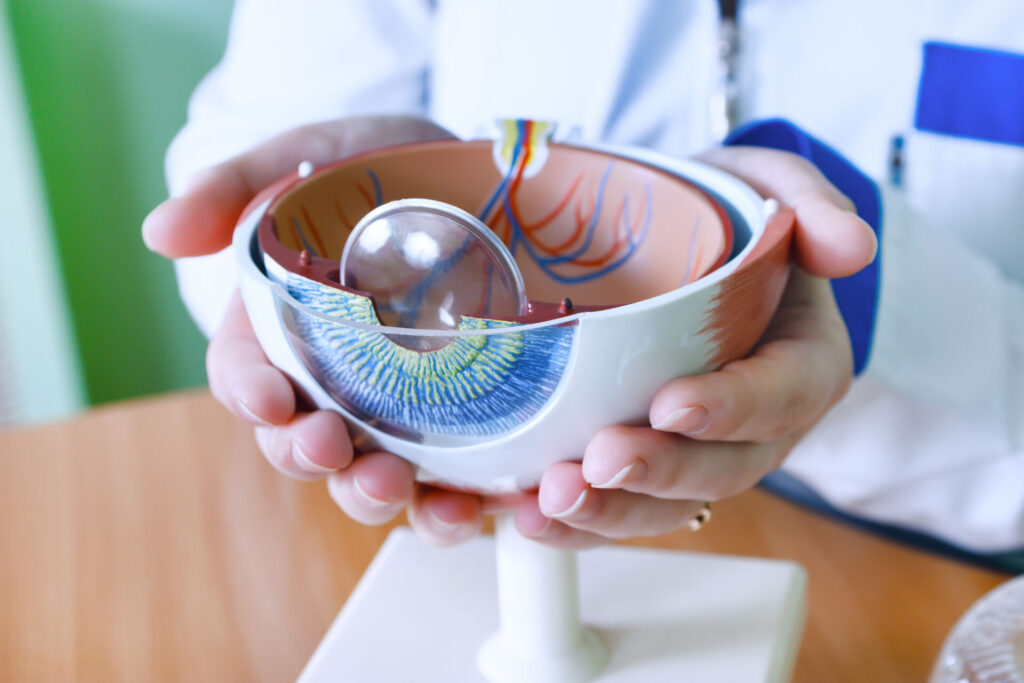Cataracts are an almost inevitable part of aging. Some studies have estimated that nearly 90% of people will develop cataracts before age 65, and more than half will require surgical correction before age 90. The clouding of the eyes’ lenses can lead to blurry vision, bright halos, or flares appearing in bright light, eventually preventing one from seeing at all.
Fortunately, a simple surgical procedure is available that can eliminate a patient’s existing cataracts but also prevent cataracts from forming in the future. With intraocular lens replacement, patients suffering from cataracts can see clearly again and never worry about cataract formation.
If you’re suffering from cataracts in one or both eyes, here are some things you should know before pursuing cataract surgery.
What Are Cataracts, and What Is Cataract Surgery?
Your eyes contain natural lenses that focus the light and allow a clear image to be projected onto the retina, which then sends the image to your brain for processing. These lenses are made up of liquid suspended inside a protein matrix. As you age, the proteins in your eyes’ lenses begin to break down and become opaque, causing your lenses to become cloudy, which can make your vision blur and eventually fail.
Intraocular lens (IOL) replacement, commonly called cataract surgery, is the only effective cure for cataracts. During an IOL replacement procedure, a doctor makes a tiny incision in the surface of your eye, breaks up and removes your natural lens, and replaces it with a clear artificial lens. Since this replacement lens is synthetic, it will never cloud, and you will never be able to develop lenticular cataracts again.
IOL replacement can correct more than cataracts. If you had to wear glasses or contacts before your cataracts began to form, IOL may also correct your refractive error and give you clear vision without corrective lenses. Your eye doctor can discuss possible corrective IOL options before your surgery.

Is Cataract Surgery Safe?
While any surgical procedure involves some risk, the risks associated with cataract surgery are minimal. IOL replacement is one of the most common surgical procedures performed in the world. It is done on an outpatient basis, usually only taking about 10-15 minutes, and you remain awake throughout the process.
Complications from the surgery are relatively rare, with most people only experiencing mild irritation or “grittiness” in the eye for a few days following the procedure. Most potential complications from the surgery will either heal with antibiotics or eyedrops, while some will require a second outpatient procedure a few days after your IOL replacement. Only the rarest of complications will lead to any permanent eye damage. Some of the potential complications following cataract surgery include:
- Retinal swelling causing blurred vision, which can be treated with drops
- Pain, which can be managed with over-the-counter pain remedies in most cases
- Allergic reaction to the drops, which can be treated with antihistamines or steroids
- Retina detachment, which is rare and can be corrected surgically
- Scratches to the eye, which can heal by themselves or with drops
- Rupture of the lens capsule, which can be corrected during the IOL replacement or may require a second outpatient procedure a few days later
More severe complications are extremely rare, occurring in only one out of every 250-1,000 procedures. Some of these include secondary cataracts (a clouding of the membrane behind the lens), glaucoma, or loss of vision.
How Soon Will I Heal After Cataract Surgery?
While the eye may take a few weeks to heal completely, you should be able to resume most activities within a few days and all activities after about a month. As soon as your procedure is complete, you’ll be prescribed or provided with eye drops to help speed the healing process. The incision required for an IOL replacement is so tiny that it heals on its own without any stitches.
The main thing to be on the lookout for following surgery is an infection in the eye. If you experience pain in the eye or blurry vision for more than a few days after surgery, you should contact your eye doctor or visit a hospital immediately.
What Can I Expect After Cataract Surgery?
You will experience blurry vision for a day or two following the procedure as your eye heals and adjusts to the new lens. Once your vision clears, you should experience better overall vision and see colors more brightly than before your procedure. You may be asked to wear an eye patch or protective shield for a few days after the surgery.
Your eye will likely feel “gritty” or irritated for a few days after surgery. You should avoid rubbing or touching your eye during this period to prevent reopening the surgical incision.
You should rest and take it easy for the first few days after the procedure. You can usually return to work, school, driving, and other activities within the first week after the surgery. However, you should avoid strenuous physical activity and contact sports for about a month.
If you had cataracts in both eyes, they won’t both be corrected during the same procedure. Instead, your eye doctor will schedule your second IOL replacement once you’ve healed from the first surgery.
Cataracts Aren’t the End of the Line for Your Eyesight. Call Eyesight Associates and Schedule a Cataract Consultation Today!
IOL replacement is a fast, straightforward procedure that provides most patients with excellent outcomes after the development of cataracts. Give us a call to learn more: 478-923-5872.
Related Articles:
